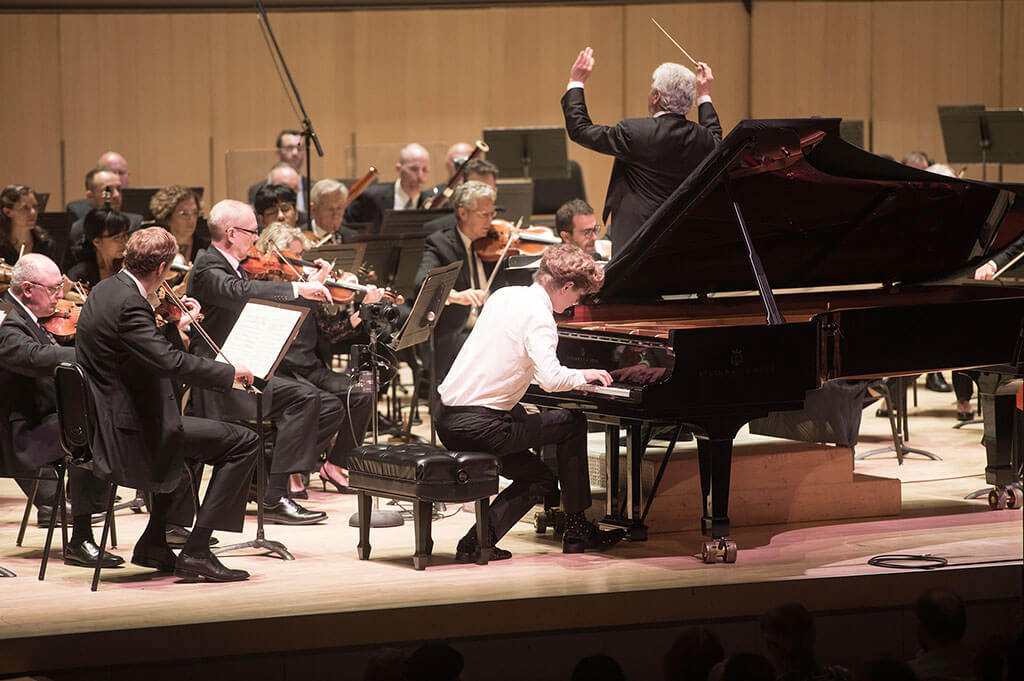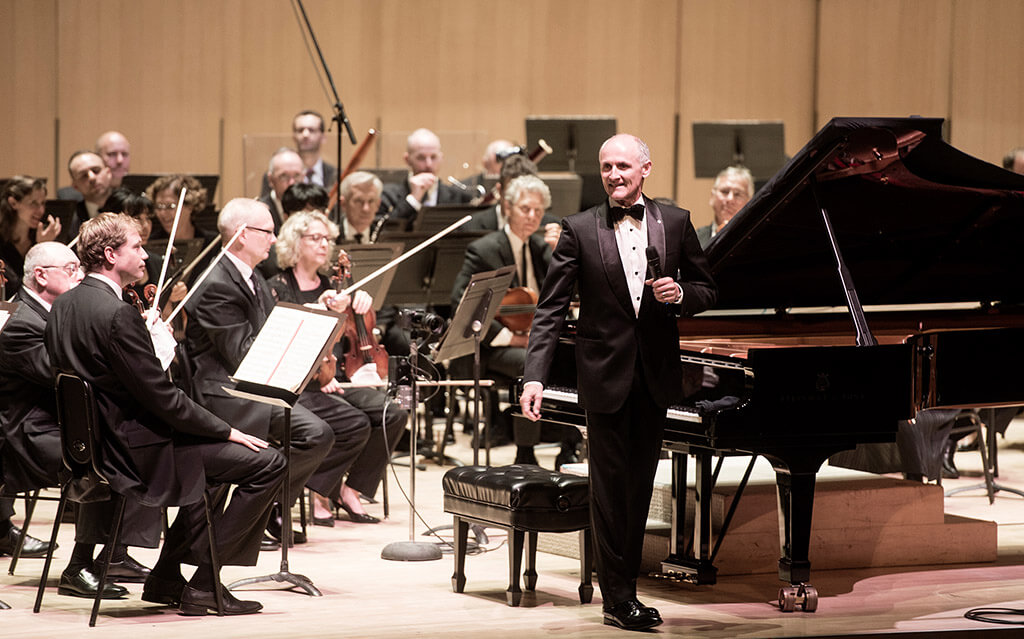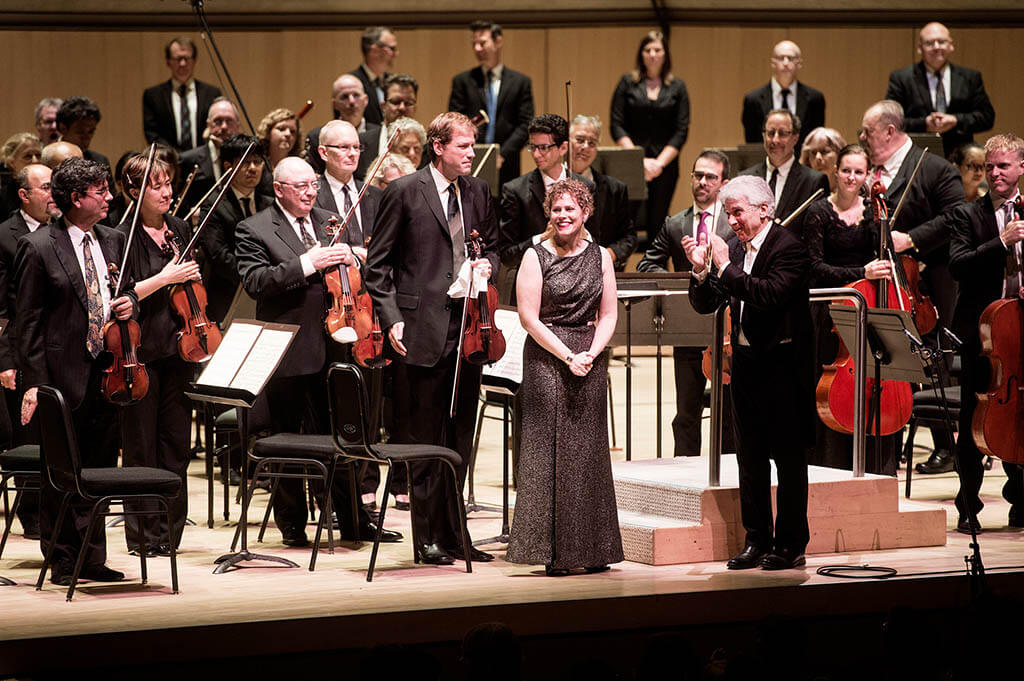
Few instrumentalists, and few Canadians are as remembered, revered and eulogized as Glenn Gould. For the Toronto Symphony Orchestra to do something was both obvious and necessary on the 70th anniversary of the late pianist’s first performance with the ensemble — not to mention the 85th anniversary of his birth, the 35th anniversary of his death and the sesquicentennial of the nation Gould never abandoned.
Yet another anniversary created an irresistible stellar alignment: 55 years since the most infamous of all Gould’s live performances, of the Brahms Piano Concerto No. 1 with the New York Philharmonic under Leonard Bernstein. On Friday in Roy Thomson Hall we heard a recording of the conductor’s articulate if self-indulgent public disclaimer (Bernstein objected to Gould’s “remarkably broad tempi” and “frequent departures from Brahms’s dynamic indications”) along with some helpful background on the 1962 incident by the master of ceremonies of the evening, the actor Colm Feore.
Then pianist Jan Lisiecki and conductor Peter Oundjian got to the job at hand, which was to address this great score on their own terms. No broad-shouldered blacksmith, Lisiecki nevertheless has a remarkable aptitude for making every note heard through exact touch, judicious use of the pedal and unerring attention to balance. He wove exquisite cross-rhythmic webs in the Adagio and played the double octaves of the first movement with bracing clarity.

Was the emphasis on the running left hand at the start of the finale a conscious tribute to the contrapuntal thinking of his late compatriot? Possibly, but it did occasion one of a few technical smudges. Not that these made a real difference. This was a superb performance with a “live” feel that captured both the personal and monumental elements of the music.
Much more than an accompanist, Oundjian drew sounds of engaging warmth (and, in the fugue of the finale, striking accuracy) from the orchestra. There was no Bernsteinian conflict with the soloist. I timed the performance at 51 minutes. As some analysts have pointed out, the 1962 Gould-Bernstein outing, at 53 minutes, is not as slow as all that, however stodgy it might sound in other ways.
Before intermission Oundjian (dispensing with his baton) oversaw a fluid and intimate account of Wagner’s Siegfried Idyll in its one-player-per-string-part chamber version. A squad of TSO principals played with great finesse. Special mention must be made of the lyrical horn of Neil Deland and the gently songful violin of Jonathan Crow. I clocked this at a little over 21 minutes – plenty slow, if considerably short of the 24-minutes-plus record established by Gould in his April 1982 studio version with TSO musicians of the day. Anyway, the effect was magical.

If only I could file a similar report of the premiere of Kelly-Marie Murphy’s Curiosity, Genius, and the Search for Petula Clark. It is known that Gould expressed interest in this British pop singer, both in print and over the airwaves, but how Murphy’s piece related to either Clark or Gould was a mystery. I heard 11 minutes of scattershot effects, from mallet banging to jabbing brass to sombre strings.
This was a Canada Mosaic program, so Feore (who played the title role in Thirty-Two Short Films About Glenn Gould) spoke in English and French. There was a two-minute “Sesquie” opener: Wihtikow, an anguished work for small orchestra by Yannick Plamondon on the difficult subject of missing and murdered Indigenous women. It was more effective in closer quarters last week when Les Violons du Roy performed it in Montreal.
Though well short of a sellout, the crowd rewarded the Brahms with a big ovation. Lisiecki responded with the echt-Gouldian encore, the Aria from the Goldberg Variations, played in a manner that reminded us of Chopin’s admiration of Bach. The program is repeated Saturday night, with another Sesquie, by Cecilia Livingston. Presumably, both Sesquies will be recorded and made available online.
#LUDWIGVAN
Want more updates on Toronto-centric classical music news and reviews before anyone else finds out? Follow us on Facebook or Twitter for all the latest.



